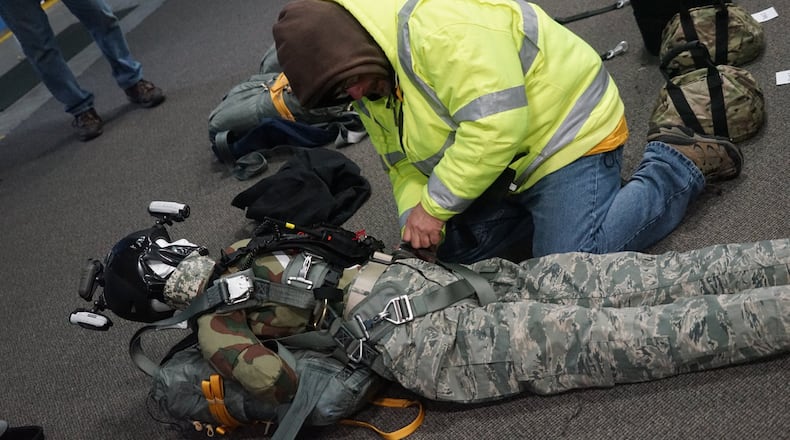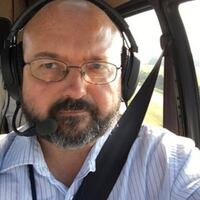The plane flies the pilot to a safe area, where pilot can parachute back to the ground, away from danger.
There, the pilot awaits a ride home.
Until that point, RAES doesn’t involve any other aircraft or rescue personnel who would be put at risk in an extraction mission.
MORE: This Ohio manufacturer wears the 'Crown'
The program started in earnest in October 2018, followed by a flight test in November, followed in February by a test with a mannequin.
That’s pretty accelerated, said Ben Bosma, MTSI principal engineer and a retired fighter pilot.
What’s needed now is further refining and tests with humans. Bosma said the firm already has some skydivers lining up to volunteer. “The Air Force is going to want to see a human test,” Bosma said. “You can’t really certify it until you have a human test.”
Speed is of the essence in a rescue situation, explained Bosma and Peter “Pepe” LeHew, MTSI senior consultant.
LeHew, also a pilot who flew in Afghanistan, said picking up a downed pilot demands a lot of resources. LeHew has been rescued himself in Afghanistan.
MORE: WPAFB contractor accused of stealing 1,000 'top secret' documents
“One person on the ground typically requires two helicopters, one (C)-130, all the fire support to escort those people,” he said. “On the helicopter you’ve got anywhere from six to eight people, all at risk to get to one (pilot).”
The question becomes: How can that risk be reduced?
David Solomon, MTSI program manager, said the intent is not to make any existing technologies obsolete — but to complement them.
“We can potentially get into an area, a contested area, and rescue the pilots before the first hour after they have been shot down,” Solomon said.
“If everything is perfect, we could theoretically have his rescue harness on the ground when he (the pilot) gets there,” Bosma said.
The system is designed to pull a pilot from between buildings or even trees, if necessary. Tests have been conducted with a 1,000-meter tether, dropped by a plane slowly circling over the pickup point.
“We can precisely place the end of that tether,” Solomon said.
Citing a RAND study, Bosma said downed pilots typically have to evade capture for two or more hours before rescue. That can be challenging if a pilot is injured or lands in an urban area, where hostile forces or civilians can quickly bear down on a crash site.
The pilot will have training and some equipment. But he or she is basically alone.
“Two hours is an eternity,” Bosma said.
With quicker extractions possible, the Air Force can plan missions with rescues in mind, he and his colleagues believe. Forces may not have to be arrayed with fast rescues in mind.
Bosma and LeHew cited the situation portrayed in the book and movie “Black Hawk Down.” An October 1993 standoff and rescue operation after two UH-60 Black Hawk helicopters were shot down in Somalia resulted in 18 American personnel killed and more than 70 wounded.
“From a planner’s point of view, that’s what they’re trying to avoid,” LeHew said.
RAES is designed to take a pilot not home but to safety, a place where he or she can wait for pickup. “That can be a matter of just a few kilometers,” Bosma said.
MTSI declined to say how much they have invested into RAES so far. But the next steps involve continued refinement and approaching a test with a human passenger.
The idea so far has won the support of Mike Hostage, a retired four-star Air Force general, and the interest of industry publications such as Popular Mechanics and Aviation Week.
“It’s important enough to invest in,” Solomon said.
About the Author

